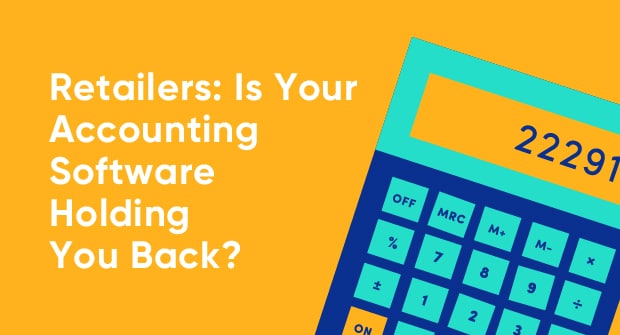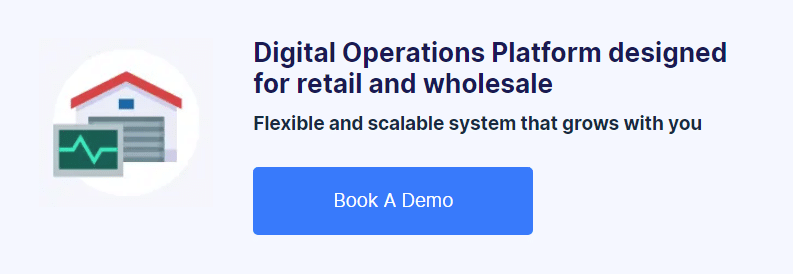Retailers: Is Your Accounting Software Holding You Back?

Running a retail business is about more than just numbers…
One of the first and most important responsibilities of running a retail business is to manage the numbers. How much are your sales worth? What are your expenses totalling? How well is your cash flowing? Accounting software packages are excellent for helping you monitor and manage these types of numbers, track expenses and revenue, and for generating those all-important tax documents. However, operating solely on accounting software can be complicated, as there are many more facets and operational needs of a retail business.
What’s in the guide?
Operating on accounting software alone is not enough, as there are many more facets and operational needs of a retail business.
You will learn:
- What challenges you may face if you are only using accounting software
- How to move beyond these challenges using an omnichannel retail management system
The challenges of operating on accounting software alone
If you’ve been running your day-to-day retail operations on accounting software alone, as your company scales; you may be going through some unnecessary growing pains, including:
- Logging into multiple systems and performing manual updates
- Creating inventory errors due to manual updates
- Lacking in customer tracking and post-sale care
Let’s look at these points in a little more detail…
Inventory and Sales
You sell your products in your shop and online via your website and marketplaces like eBay and Amazon. To ensure your inventory is accurate in real-time across all of your sales channels, you need to log into BigCommerce, Shopify, Magento, eBay or Amazon to manually update each transaction. Then you must log back into your accounting system to record the transactions to track the Cost of Goods Sold (COGS) and other factors. This several step process is necessary in order to ensure your numbers are correct, but it’s time consuming and opens yourself up to human error.
The domino effect of mistakes in inventory data can lead to lost sales and unhappy customers, along with rush charges on product purchase orders, or a glut of dead stock that requires discounting. Correcting mistakes and doing manual entry back and forth between platforms could have you in a vicious circle, pulling you away from working on new ways to grow your retail business.
Customer Relationship Management
Your customers keep you in business, so it’s your duty to keep them happy. Accounting systems focus on numbers, not people. Most likely you have a separate process for managing your sales operations – maybe you’re using an Excel spreadsheet or even an email marketing platform.
While the latter is great for streamlining a portion of your marketing operations and keeping your potential and current customers up-to-date and engaged; email programs don’t allow you to track each customer’s order history. They don’t reflect where potential buyers are in the sales funnel or which of your staff has communicated with them and when. Nor are they connected to your inventory management or accounting system. If a customer calls in to check on an order, it may be difficult or time consuming to get the status of it. Having disparate systems may not only have you running in circles, it may be costing you sales.
Order Fulfillment and Shipping
To properly manage your sales, you need an effective order processing system. Your accounting system may manage the tracking of the sales numbers, but how do you provide order status updates in an efficient way? Is the customer automatically notified of the shipment? What about automatic calculation of VAT or sales tax, along with shipping costs?
If you’re forced to manually calculate these important figures, you could be opening yourself up to costly errors that have numerous ramifications. Plus, post-sale customer service is as important as presales service to ensure that your customers come back for more. Handling exceptions and returns as well as complaints effectively is an important part of any retail business, but is made much more difficult if you are only relying on an accounting platform.
Moving beyond these challenges
When you decide to make the move to a retail management platform, many of the processes you did manually will now be processed automatically. Inventory levels are updated in real-time, which impacts on the real-time accounting functionality of the system as well. This in turn provides you with access to up-to-date profit and loss data, balance sheet values, and sales reports, allowing you to focus more of your time and energy on improving the customer experience to help grow your business.
Let’s discuss this in more detail…
Inventory and Sales
Managing inventory and sales within a retail management system operates using double-entry accounting, which is likened to Sir Isaac Newton’s Third Law: with every action, there is a reaction.
For example, when you accept products from a supplier into your inventory, entry of this results in the following reactions:
- The inventory value is added into your balance sheet’s inventory assets (debit).
- The equal amount (credit) is recorded as inventory received but not invoiced (liability) until that supplier’s invoice is received and then paid by you.
- On the accounts receivable side, when your customer has ordered a product and you’ve shipped it out, the quantity and cost of the item is decreased in your inventory (credit).
- The cost of sales is automatically recorded at the same time to provide your Cost of Goods Sold.
All of these reactions enable real-time profit and loss management and real-time accounting, providing your business with critical operational data available at your fingertips at any time. With this up-to-date knowledge, you can address any potential issues quickly whilst making more informed business decisions.
Customer Relationship Management
To nurture and build relationships with prospects and existing customers, many companies turn to customer relationship management (CRM) systems. A CRM system enables the ability to track prospects’ progress through your sales funnel, an essential tactic for turning them into customers. You can assign statuses and reminders to follow up with regular customers to increase service quality and keep orders flowing.
Having your CRM integrated with other key areas of your business through a retail management platform, means you can view customer order history, activity, and invoices, allowing you to market to them from one place. The email marketing function of the platform supports smart forms for lead capture on any website, which feeds into your CRM for lead nurturing campaigns, email marketing, and even mobile marketing via SMS.
Centralized Order Fulfillment and Shipping
With a truly integrated retail system, sales data from all of your channels – in store, online from your website, phone orders, or through eBay or Amazon marketplaces – is accessible and accurate because all of the actions and reactions are connected.
- When you’re ready to fulfill your orders, ‘available to sell’ inventory is automatically decreased and product items are allocated to the orders as they are prepared for shipment.
- When the product leaves your warehouse, that action automatically decreases the ‘in stock’ inventory, which also reduces your asset value or stock take.
- The ‘shipped’ status appears within your retail management platform and a shipment notification is sent to your customer.
This streamlined process prevents you from overselling products, increases customer satisfaction whilst also providing real-time accounting data. The option to filter and complete batch processes such as sales, purchases, and shipments saves time and gives you access to accurate information more easily. You and your staff know what‘s going on at all times. You‘re in control.
Conclusion
Does your accounting system do everything laid out towards the end of this guide? Highly doubtful. So why would you use a lone accounting platform to run your day-to-day retail operations? By centralizing your accounting, inventory management, sales and customer management within a single retail platform, you’re able to focus on the things that help you to grow your business, and you’re able to get back to totally loving the work that you do.

